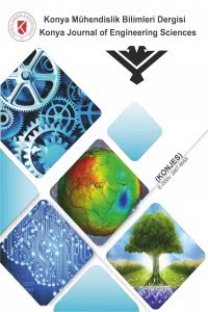İkili ve gerçek kodlu genetik algoritmaların karşılaştırılması
Comparison of binary and real coded genetic algorithms
___
- Adewuya, A.A, 1996, New methods in Genetic Search with Real Valued Chromosomes, Master's Thesis, Cambridge: Massachusetts Institute of Technology.
- Davis, L., 1991, "Hybridization and numerical representation," in L.Davis(Ed.), The Handbook of Genetic Algorithms, New York: Van Nostrand Reinhold, pp. 61-71.
- Eshelman, L.J., and D.J. Shatter, 1993, "Real-coded genetic algorithms and interval-schemata", in D.L. Whitley (Ed.), Foundations of Genetic Algorithms 2, San Mateo, CA: Morgan Kaufman, pp.187-20.
- Goldberg, D.E.,1989, Genetic Algorithms in Search, Optimization, and Machine Learning, New York: Addison Wesley.
- Haataja,1994, Solving Optimization Problems. CSC- Center for Scientific Computing Ltd, Yliopistopaino. ISBN 952-9821-02-6. Ed. 1. 232p (In Finnish).
- Haupt Randly L., Haupt Sue E., 1998, Practical Genetic Algorithms, A Willey-Interscience Publication, USA.
- Holland, J.H., 1992 July, "Genetic algorithms," Sci. Am. Pp. 66-72.
- Michalewicz, Z., 1994, Genetic Algorithms + Data structures = Evolution Programs, 2n ed., New York: Springer-Verlag.
- Palko S., 1996, "Structural Optimization of Induction Motor using a Genetic Algorithm and a Finite Element Method", Acta Polytechnica Scandinavvica, Electrical Engineering Series No. 4, Helsinki, pp. 10-12.
- Radcliff, N.J., 1991, "Forma analysis and random respectful recombination." In Proc. of Fourth International Conference on Genetic Algorithms, San Mateo, CA: Morgan Kauffman.
- Wright, A., 1991, " Genetic Algorithms for real parameter optimization," in G.J.E. Rawlins (Ed.), Foundations of Genetic Algorithms 2, San Mateo, CA: Morgan Kaufman, pp.205-218.
- ISSN: 1300-5200
- Yayın Aralığı: 4
- Başlangıç: 2018
- Yayıncı: -
Konya Ovaları projeleri' nde (KOP) yapılan arazi toplulaştırması calışmalarının değerlendirilmesi
Mathematical modeling of a flexible shaft-link system by Hamilton' s principle
ARİF ANKARALI, Mete KALYONCU, Fatih M. BOTSALI, Turan ŞİŞMAN
İkili ve gerçek kodlu genetik algoritmaların karşılaştırılması
Hasar görmüş betonarme kirişlerin epoksi ile çelik levha yapıştırılarak onarılması
Selçuk Üniversitesi Kampüsü atıksuyu arıtım projesinin hazırlanması
